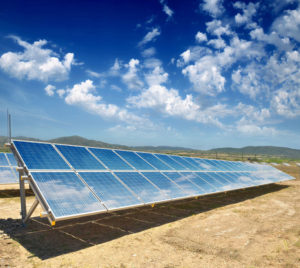Meeting the climate change goals agreed on in the Paris climate accord will require a huge investment in infrastructure. This is because globally more than 50 percent of greenhouse gases come from infrastructure. Financing sustainable water infrastructure will be a challenge, but three new initiatives are showing how it could be done.
Why sustainable water infrastructure is critical
According to the Brookings Institution, investment in global infrastructure will need to double over the next 15 years in order to fill existing gaps and meet growth in demand. This means an increase per year from $2.5 trillion to $3 trillion currently to around $6 trillion. Over 15 years, this will amount to about $89 trillion.
However, if this new infrastructure is not sustainable, it will be impossible to meet the goals of the Paris climate accord. Building sustainable infrastructure – two-thirds of which will need to be built in developing countries – will cost an additional $4.1 trillion, leading to a total amount of $93 trillion. It’s a big number, but the stakes have never been higher.
Financing sustainable water infrastructure, and retrofitting the old, will play a key role in lowering greenhouse gas emissions. Here are three new initiatives that aim to make a difference.
1. The Green Climate Fund
The Green Climate Fund was created to help developing countries finance projects that will help them mitigate and adapt to the effects of climate change. It was created as a financial mechanism of the UN Framework Convention on Climate Change at the end of 2011, but first began funding projects in November 2015.
A water infrastructure project in Fiji was one of the first projects to receive funding. The Fiji Urban Water Supply and Wastewater Management Project received a $31 million grant to increase clean water supplies by 20 percent and boost wastewater treatment capacity by 200 percent in the metropolitan center of the country. As of April 2016, the Green Climate Fund has raised $10.2 billion in pledges from 42 state governments, and has additional pledges for $US 100 billion per year by 2020.
2. The Water Infrastructure and Resiliency Finance Center
In the US, more than $600 billion is needed over the next 20 years to maintain and improve the country’s water infrastructure. In 2015, the US Environmental Protection Agency launched The Water Infrastructure and Resiliency Finance Center, to help communities improve their water systems, particularly through innovative financing and building resilience to climate change.

The center acts as a resource for public utilities and private entities as they address water infrastructure needs with limited budgets. It helps communities develop financing strategies for sustainable and resilient infrastructure, access federal and state financing, and build public-private partnerships.
A similar initiative in Arizona, the Water Infrastructure Finance Authority, has already successfully helped utilities obtain loans for energy-efficiency improvements. The city of Douglas, for example, received a $1.3 million loan to design and install a 300-kilowatt solar system to power its wastewater treatment plant. The solar array will supply 50 percent of the plant’s electric requirements.
3. The Water Climate Bonds Standard
Green bonds, issued for the first time less than ten years ago, were developed to obtain private financing for environment projects. Today the global green bond market is valued at more than $50 billion. To help investors find water infrastructure projects that are truly green, The Water Climate Bonds Standard was created in 2015 by Ceres and a number of partners.

This standard provides investors with verifiable, science-based criteria for evaluating bonds that will finance sustainable water infrastructure projects. In May 2016, the San Francisco Public Utilities Commission became the first organization to issue a green bond certified under the Water Climate Bonds Standard. The $240 million Wastewater Revenue Bond will help fund projects to improve the city’s storm water and wastewater systems.

